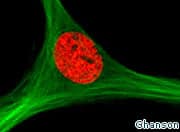International Stem Cell Day on Wednesday marked 25 years of the science – a period which has seen the development of over 100 treatments using adult stem cells and no successful treatments from controversial embryonic stem cells.
Embryonic stem cell research involves the destruction of human embryos and has proved highly contentious across the globe.
However adult stem cell research does not involve the destruction of human embryos and has so far led to over 100 clinical treatments.
Advances
In March this year a ten-year-old boy had his windpipe rebuilt using his own stem cells.
The surgery, which led the boy to be able to breathe better than he had been able to for years, was also exciting as it showed how quickly advances in stem cell technology are being made.
Only two years ago a woman in Spain had a new windpipe grown from non-embryonic stem cells, but this was at a cost of millions of pounds.
But Professor Martin Birchall, head of translational regenerative medicine at University College London, said the ten-year-old’s operation cost “about £10,000″.
Scientists
The debate surrounding the use of embryos in stem cell research is often portrayed as between scientists on one hand, and religious or ethical objectors on the other.
However, it is increasingly scientists who are championing the far more promising avenue of adult stem cell research rather than work using and destroying embryos.
In December last year it emerged that a man who suffered a broken leg had it saved from amputation as a result of an adult stem cell procedure.
Accident
Andrew Kent, who broke his leg in a climbing accident, faced losing it as a result of fractures in five places.
But orthopaedic surgeon Anan Shetty removed stem cells from the bone marrow in Mr Kent’s hip and then mixed them with a collagen gel called Cartifill to make a paste which was smeared into the fractures.
The surgeons then fixed Mr Kent’s leg in a metal cage to gently squeeze the bones together. Following the cage’s removal Mr Kent’s bones had mostly healed and Anan Shetty, the orthopaedic surgeon behind the operation, said: “he’ll be able to go back and rock climb again”.
Professor Seok Jung Kim, who invented the Cartifill collagen gel, said: “Many people who have problems with the knee injuries can get effective, low-cost treatment with this technique.”
Controversial
In 2008 the Human Fertilisation and Embryology Bill was passed by Parliament. The controversial Act widened the law for more destructive experiments on human embryos.
It allowed the creation of embryos that are part animal and part human. It also permits the creation of ‘saviour siblings’ (genetically selected children who are created so that their tissue can be used to treat a sick brother or sister).
The Act removed a law which required doctors to consider a child’s need for a father before referring a woman for IVF treatment.


